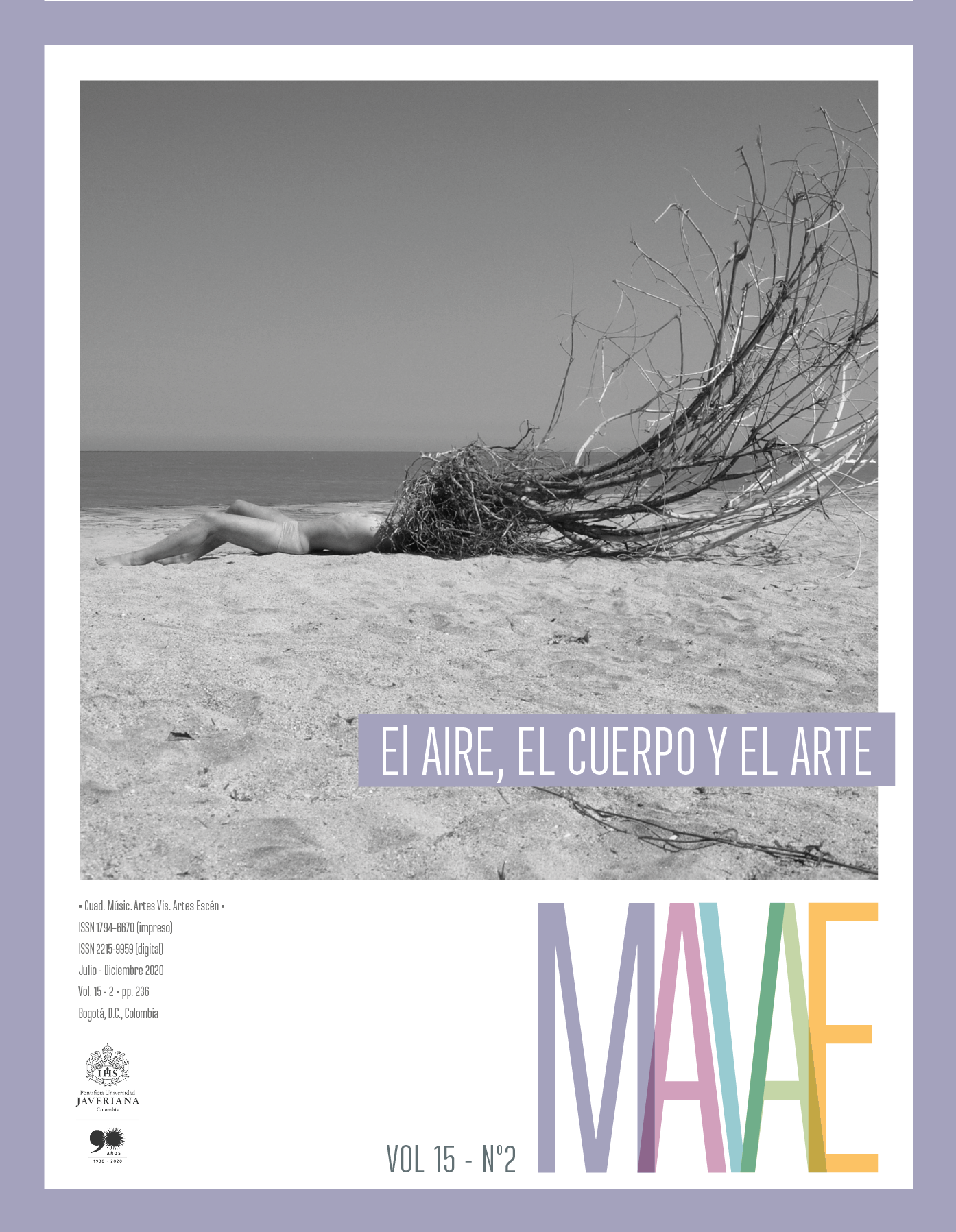Resumo
Este texto resume a viagem que empreendi para meu projeto de pesquisa-criação de luteria experimental colaborativa. Enquanto eu cursava meu Mestrado em Artes Sonoras, me vi profundamente interessado no caráter e a presença do vento com o qual tropeçava constantemente em Belfast, Irlanda do Norte. Adotando um foco cosmopolítico proposto por Isabelle Stengers, lido no marco das artes contemporâneas, avaliarei a viabilidade de apresentar o processo de fabricação de sons como uma plataforma de colaboração onde seja possível a interação de atores humanos e não humanos. Enquanto eu me perguntava como estabelecer mecanismos de intercâmbio sônico com o vento, redescobri as práticas locais de fabricação de pipas e comecei a estudar a pipa usando ferramentas conceituais vindas da teoria alemã da mídia, particularmente o trabalho iniciado por Friedrich Kittler. É uma realidade física que a pipa não poderá voar se faltasse o Vento ou o Humano; portanto, nesse sentido, argumentarei que o voo da pipa pode apresentar-se como Kulturtechnik sempre e quando ambos os atores sejam afetados por resultado da ação colaborativa. Indo um passo mais além, explorarei a construção de pipas em termos de luteria experimental como um processo onde o “instrumento” final é, na verdade, o resultado da interação vento-humano-som.
Bjerknes, Jacob. 1964. “Atlantic Sea interaction.” Advances on
geophysics 10: 1–82.
Borrero Milciades, Marleny Pérez. 2004. Vaupés mito y realidad, MåniJitiKiti.
Bogotá: Dede banjo.
Brinton, Daniel. 1881. “The Name of the Gods in the Kiche Myths, Central
America.” In Proceedings of the American Philosophical Society, 613–
647. www.jstor.org/stable/982803.
Cáceres, Adolfo. 2006. Narrativa qechua del Tawantinsuyu. Buenos Aires:
Ediciones del Sol.
Chen, Xianjiao, and Ka-Kit Tung. 2018. “Gulf stream map” on Global Surface
Warming Enhanced by Weak Atlantic Overturning Circulation. Nature
559, 387–391. https://www.nature.com/articles/s41586-018-0320-y
De Borhegyi, Stephan. 1966. “The Wind God’s Breastplate.” Expedition
Magazine 8(4): 13–15. http://www.penn.museum/sites/
expedition/?p=1588
Emanuel, Kerry. 2005. Divine Wind. Oxford: Oxford University Press.
Ferment, Didier, Bruno Tondellier, and Uli Wahl. 2008. Musiques du vent.
Lyon: Lugdivine.
Becerra, Eudocio. 1998. “El poder de la palabra”. Forma y función 11: 20.
Bogotá: Universidad nacional de Colombia.
Dieusao. (2015). Tiếng Việt: Diều sáo tung bay. https://commons.wikimedia.
org/wiki/File:Th%E1%BA%A3_Di%E1%BB%81u.jpg
Dodson, Chris. n.d. Got wind? Make Music! http://gotwindmakemusic.org
Gómez-Londoño, Ana María. 2013. “Memory Code®.” Magister thesis.
Universidad Nacional de Colombia.
Gregory, Ken. n.d. Wind coil sound flow. https://cheapmeat.net/
kengregoryTop.html
Heaney, Seamus. 2010. Human Chain. A kite for Aibhin. London: Faber & Faber.
Hennessy, Henry. 1959. “On the influence of the gulf-stream on the winters
of the British Islands. In a letter from Professor Hennessy to Major-
General Sabine, V. P. and Treas. R. S. Communicated by Major-General
Sabine”. London. Proceedings of the Royal Society 9: 324 - 328.
Hildebrand, Martin. 1983. “Notas etnográficas sobre el cosmos ufaina y su
relación con la maloca.” Maguaré 2: 177–210.
Krämer, Sybille, & Horst Bredekamp, 2013. “Culture, Technology, Cultural
Techniques: Moving Beyond Text.” Theory Culture and Society 30: 20–29.
Joyce, James. 1922. Ulysses. New York: Dover Publications 2009.
MacGarrity, Maria. 1979. Washed by the Gulf Stream. Delaware: University
of Delaware Press.
Matisse, Jackie. 2000. Art that Soars: Kites and Tail. San Diego: Mingei
International Museum.
Miller, Mary, & Karl Taube. 1997. An Illustrated Dictionary of the Gods
and Symbols of Ancient Mexico and the Maya. London: Thames
and Hudson
Ocean today. n.d. The Making of a Superstorm. https://oceantoday.noaa.
gov/makingofasuperstorm/
Ortiz, Fernando. 1947. El huracán su mitología y sus significados. México DF:
Fondo de Cultura Económica.
Oxford Contemporary Music. Audible Forces. https://www.ocmevents.org/
audible-forces
Oxford English Dictionary Online. Oxford: Oxford University Press, 2004.
http://www.oed.com/viewdictionaryentry/Entry/11125
Peña, Juan Carlos. 2010. Mitú, ciudad amazónica, territorialidad indígena.
Leticia: Universidad Nacional de Colombia.
Simón, fray Pedro. 1892. Noticias historiales de las conquistas de Tierra
Firme en las Indias occidentales. Bogotá: Casa editorial de Medardo
Rivas.
Suay, Juan Miguel. 2000. Cometas tradicionales en España y América.
http://comevientos.96.lt/historia/articulo/especial01.pdf
Tedlock Danis, 1996. Popol Vuh. The Mayan Book of the Dawn of Life.
California: Touchstone.
Windmusik, Uli Wahl. (n.d.). Kite Musical Instruments & Aeolian Musical
Instruments. http://windmusik.co

Este trabalho está licenciado sob uma licença Creative Commons Attribution 4.0 International License.
Copyright (c) 2020 José Manuel Páez Moncaleano



